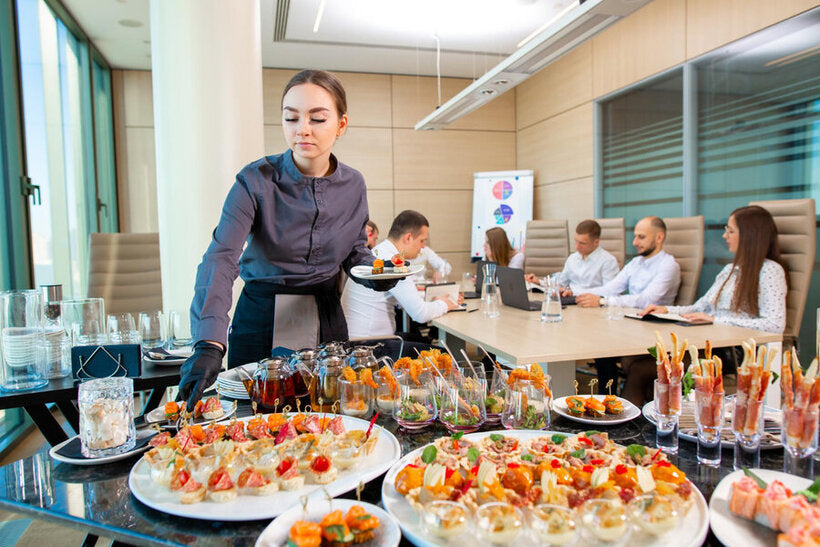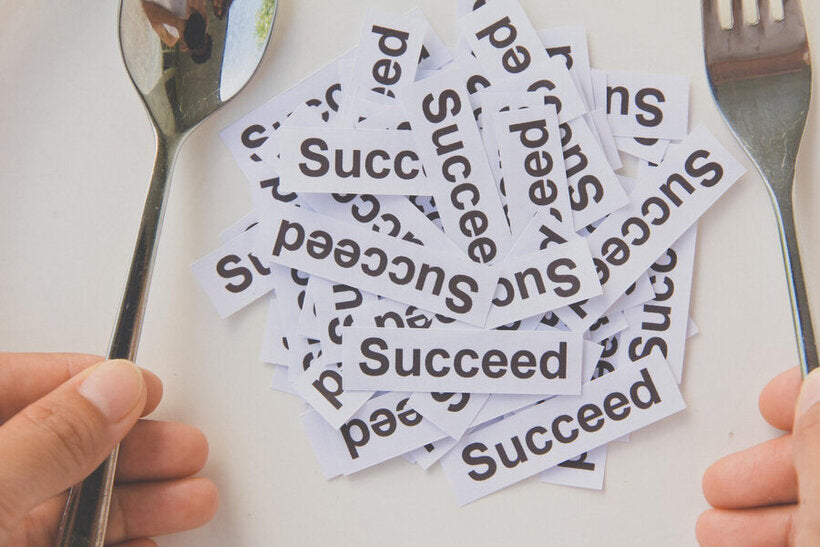
Effective Restaurant Marketing Ideas to Try
Great food alone doesn't guarantee a packed dining room anymore. In today's restaurant scene, your marketing savvy matters just as much as your menu. Local cafés to fine dining spots are discovering that clever promotion strategies often separate thriving restaurants from those struggling to fill tables.
No theoretical concepts here—just proven marketing approaches that have helped actual restaurants fill their reservation books, increase their ticket sizes, and turn first-time visitors into regulars. Ready to dive into what's actually working out there? Let's get to it.

Start With a Solid Marketing Foundation
Before diving into specific tactics, make sure your restaurant marketing plan addresses these fundamental elements:
Know What Makes You Different
What's your restaurant's "secret sauce" beyond the actual sauce? Maybe it's your third-generation family recipes, unique fusion concept, or commitment to hyper-local ingredients. This differentiator should shine through all your marketing efforts for restaurants.
Jane Kwon, owner of Peachtree Bistro in Atlanta, saw a 23% increase in new customers after refocusing her messaging on their unique farm partnerships rather than the generic "fresh ingredients" claims that every restaurant makes.
Define Your Ideal Customers
Generic restaurant promotion rarely works. You need to know exactly who you're trying to attract:
-
Which neighborhoods do they live in?
-
What's their typical dining budget?
-
Do they value speed, atmosphere, or uniqueness more?
-
Where do they get dining recommendations?
This information helps you craft messages that actually resonate instead of disappearing into the noise.
Set Specific, Measurable Goals
Vague objectives like "get more customers" won't help you track progress. Instead, create specific restaurant marketing strategies with targets like:
-
Increase weekend dinner reservations by 15%
-
Grow bar revenue by $2,000 weekly
-
Boost take-out orders Monday-Wednesday by 25%
-
Improve the return customer rate from 15% to 25%
These concrete benchmarks help you determine whether your marketing for food business investments is paying off.

Digital Marketing Tactics That Work for Restaurants
The digital landscape offers numerous opportunities for restaurant marketing if you focus on the right channels:
Make Your Website Work Harder
Your website isn't just an online brochure. It should actively convert visitors into diners:
-
Add online reservation capability directly on the homepage
-
Ensure loading speed under 2 seconds (visitors abandon slower sites)
-
Make your menu easy to find and mobile-friendly
-
Include location maps and parking information prominently
-
Add appetizing food photos that match your actual plating
Small improvements to your website can dramatically impact your restaurant marketing results—many establishments report 30%+ increases in reservations after website optimization.
Own Your Google Presence
When people search for "restaurants near me," Google's results determine whether they find you. Optimize your Google Business Profile by:
-
Uploading new food photos weekly (restaurants with 15+ photos get 42% more requests for directions)
-
Updating seasonal hours immediately
-
Responding to every review within 24 hours
-
Adding menu information directly to your profile
-
Using Google Posts to highlight specials and events
This free restaurant marketing channel often drives more traffic than paid advertising for local businesses.
Build a Social Media Strategy That Fits Your Restaurant
Not every platform deserves your attention. Focus on the channels your customers actually use:
-
Instagram works best for: Visual concepts, upscale dining, brunch spots
-
Facebook works best for: Community-focused restaurants, suburban establishments, and family dining
-
TikTok works best for: Restaurants with unique presentations, specialty items, or entertaining staff
Calabria Pizza in Chicago concentrated solely on Instagram rather than spreading itself thin across multiple platforms. The result? Their following grew to 28,000 local followers who regularly engage with their content and visit the restaurant.
Email Marketing That Builds Relationships
Email remains one of the highest-ROI restaurant marketing ideas available. Build your strategy around:
-
Thank-you messages after first visits
-
"We miss you," offers for customers who haven't returned
-
Event announcements and special menus
-
Insider content like chef interviews or recipe snippets
Segment your messages based on dining habits—a customer who orders take-out twice weekly needs different communication than a customer who visits only for special occasions.
Manage Your Online Reputation
Restaurants live and die by their reviews. Implement these marketing strategies for restaurants to improve yours:
-
Train staff to subtly encourage happy customers to leave reviews
-
Create a recovery process for service failures before customers leave
-
Set up alerts to notify you of new reviews immediately
-
Respond thoughtfully to criticism rather than defensively
Three negative reviews in a row can decrease your business by up to 13%, according to restaurant industry studies.
Physical Marketing That Still Matters
Despite the digital shift, tangible marketing elements remain crucial for restaurant advertising:
Leverage Your Physical Space
Your restaurant itself should be your best marketing asset:
-
Create at least one Instagram-worthy spot or signature presentation
-
Use custom restaurant menu covers from Kyivworkshop that reinforce your concept
-
Design distinctive restaurant check presenters that prompt social sharing
-
Consider your lighting—well-lit food gets photographed and shared more often
These physical elements enhance the dining experience while encouraging organic promotion by your guests.
Engage With Your Local Community
Restaurants thrive when they become community fixtures:
-
Partner with local charities for percentage donation nights
-
Create special menus for hometown sports victories
-
Participate in food festivals and farmers' markets
-
Offer your space for community meetings during off-hours
Harbor Bistro in Portland increased weekday lunch traffic 35% after starting a "Community Champions" program that highlighted local business owners with special menu items named after them.
Forge Strategic Business Partnerships
The right alliances can significantly boost your restaurant marketing results:
-
Connect with hotel concierges for tourist referrals
-
Partner with local businesses for employee discount programs
-
Create pairing experiences with nearby breweries or wineries
-
Develop corporate catering relationships with office buildings
These partnerships create steady revenue streams while minimizing marketing costs.

Customer Retention Strategies Worth Implementing
Bringing diners back costs far less than chasing new ones—smart restaurant owners know this secret. Your existing customers represent your most valuable business asset when you nurture these relationships properly.
Design a Loyalty Program That Works
A thoughtfully designed loyalty program drives repeat business without feeling gimmicky. The most effective ones offer rewards customers can actually reach (unlike those requiring 50 visits for a free appetizer). Mix tangible benefits with unexpected perks—maybe a kitchen tour or recipe card from your chef. The surprise element keeps regulars engaged while your collected data helps personalize their experience. Restaurants seeing the biggest impact report visit frequency jumping by a third and average spending increasing nearly 50% after implementing properly structured programs.
Perfect the Customer Experience
The subtle touches throughout a dining experience determine whether guests pencil you in for next week. Train your team to notice and acknowledge returning faces. Capture preferences discreetly—whether they prefer still or sparkling water, or that corner booth by the window. Those custom restaurant check presenters make your final interaction memorable rather than transactional. A quick follow-up after birthday celebrations or anniversary dinners shows genuine care. These meaningful connections transform occasional visitors into passionate advocates.
Turn Feedback Into Improvement
Customer feedback should directly shape your evolving restaurant marketing plan. QR codes nestled on restaurant menu covers make sharing thoughts frictionless. Create channels for passing these insights to both kitchen and front-of-house teams. What good is feedback if it never reaches the people who can act on it? When customers suggest improvements that you implement, announcing the change acknowledges their contribution. Even negative feedback deserves thanks when constructive—the customer who bothers to explain their disappointment often gives you the most valuable business intelligence.
Essential Tools for Restaurant Marketers
The right tools make implementing these marketing ideas for restaurants much easier:
Marketing Automation Tools
Save time while staying consistent with your outreach:
-
Email platforms with restaurant-specific templates
-
Social media scheduling tools to maintain a posting cadence
-
Review management systems that alert you to new reviews
-
SMS platforms for reservation confirmations and special offers
These systems allow you to maintain marketing momentum even during your busiest periods.
Analytics and Data Management
Track your restaurant marketing performance with:
-
POS systems that integrate with your CRM
-
Reservation platforms that capture customer preferences
-
Website analytics to monitor online ordering patterns
-
Social media insights to identify your highest-performing content
These metrics help you double down on what's working and adjust what isn't.
Visual Content Creation
Compelling visuals drive engagement across all restaurant marketing strategies:
-
Smartphone camera accessories for better food photography
-
User-friendly editing apps for quick touch-ups
-
Template-based design tools for social media graphics
-
Video editing software for creating short promotional clips
Quality visual content consistently outperforms text-only marketing by 40% or more in engagement rates.
How to Measure Restaurant Marketing Success
Tracking the right metrics transforms your marketing for a food business from guesswork into strategy.
Key Performance Indicators to Watch
Rather than scattered observations, focus on concrete indicators like new customer acquisition costs alongside their lifetime value. Pay attention to year-over-year revenue growth patterns and customer return percentages to gain meaningful insights. The relationship between your social engagement and follower count often reveals more than raw numbers alone.
Test, Measure, Refine
Successful restaurant marketing plan implementation demands continuous testing and refinement. Try different promotional offers with unique tracking codes to identify what drives actual visits. Experiment with messaging variations across customer segments to discover what resonates most effectively. The timing of your digital communications—whether email blasts or social posts—can dramatically affect response rates. Compare performance between channels to optimize your budget allocation. Begin with small-scale experiments before making sweeping changes to your approach.

Putting Your Plan Into Action
Here's how to implement these restaurant marketing ideas in manageable phases:
First 30 Days: Foundation Setup
-
Audit your current marketing efforts and results
-
Update your Google Business Profile completely
-
Set up proper tracking for website traffic and reservations
-
Draft your 90-day marketing calendar
Days 31-60: Launch and Testing
-
Begin consistent social posting on your primary platform
-
Start collecting email addresses systematically
-
Launch your first targeted promotion
-
Implement systematic review management
-
Train staff on effective strategies for restaurant management that support marketing
Days 61-90: Optimization and Expansion
-
Analyze results from initial campaigns
-
Refine targeting based on customer response
-
Expand to secondary marketing channels
-
Introduce a loyalty program or refresh an existing one
-
Add custom restaurant check presenters to enhance branding
This phased approach prevents overwhelm while building momentum.
Taking Action On These Ideas
You don't need to implement every restaurant marketing idea at once. Start with these steps:
-
Choose the three strategies most relevant to your current situation
-
Set specific goals for each strategy
-
Implement one strategy per month
-
Track results meticulously
-
Adjust based on performance
The best marketing strategies for restaurants evolve continuously based on customer response and market conditions.
Remember that consistency matters more than perfection. A modest marketing plan executed faithfully will always outperform ambitious but inconsistent efforts.
Your restaurant's unique character should shine through all your marketing efforts. At Kyivworkshop, we help restaurants enhance their physical branding with premium restaurant menu covers and restaurant check presenters that complement their overall marketing approach while supporting effective restaurant management strategies.
The restaurant industry has always been challenging, but with thoughtful restaurant marketing, you can build a thriving establishment that withstands competitive pressures and economic fluctuations. Your next successful promotion might start with just one idea from this guide.




Leave a comment
This site is protected by hCaptcha and the hCaptcha Privacy Policy and Terms of Service apply.